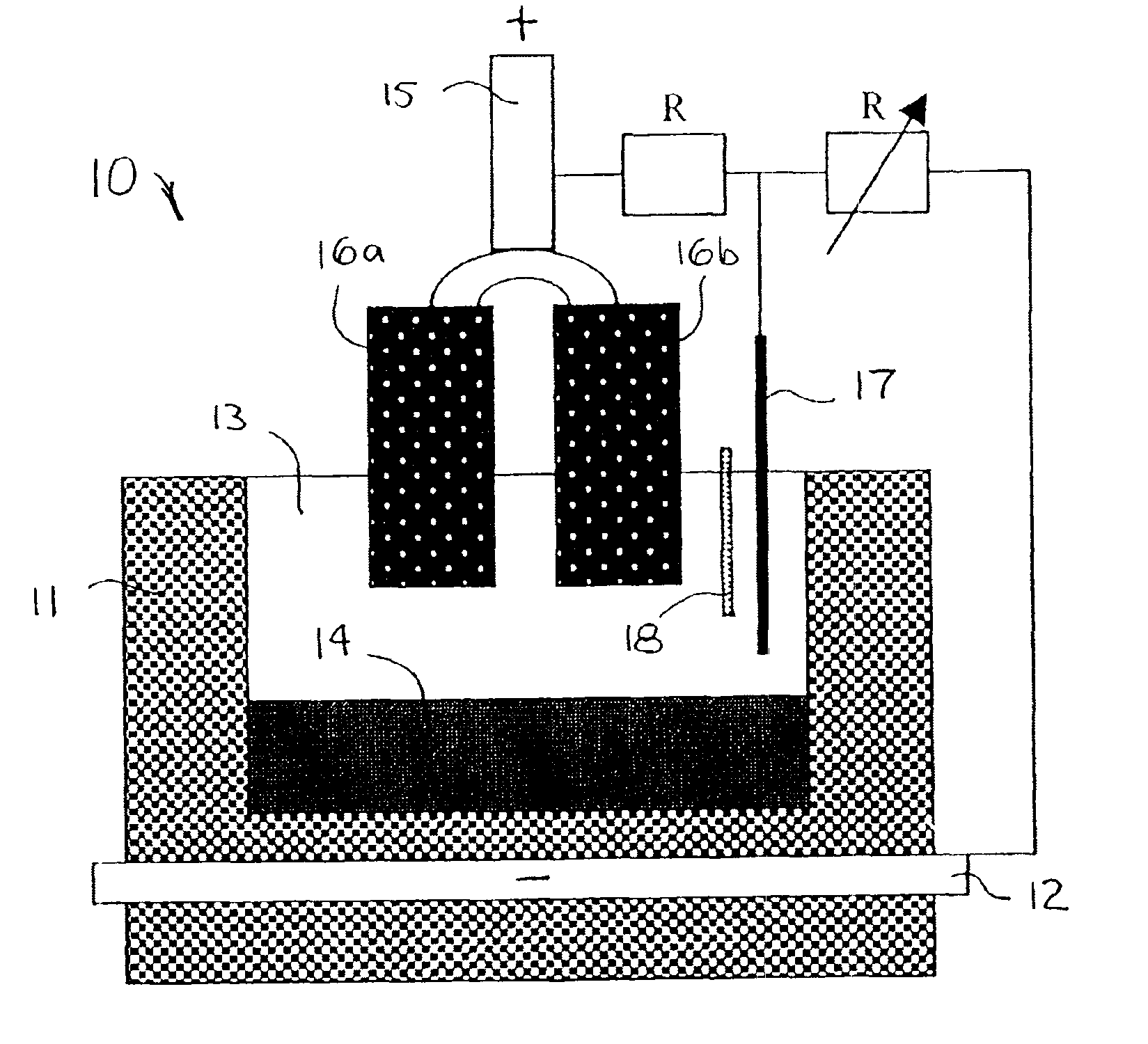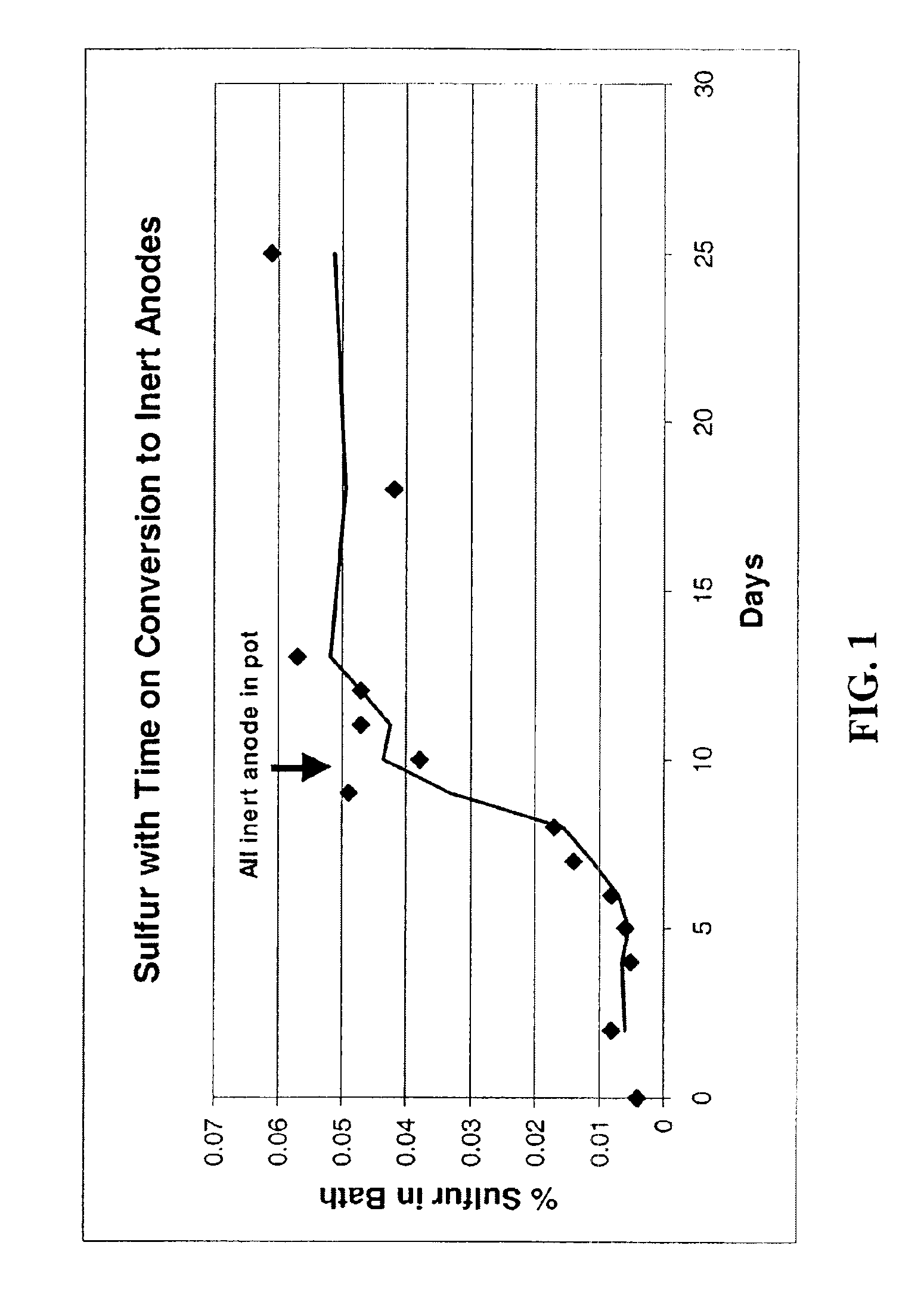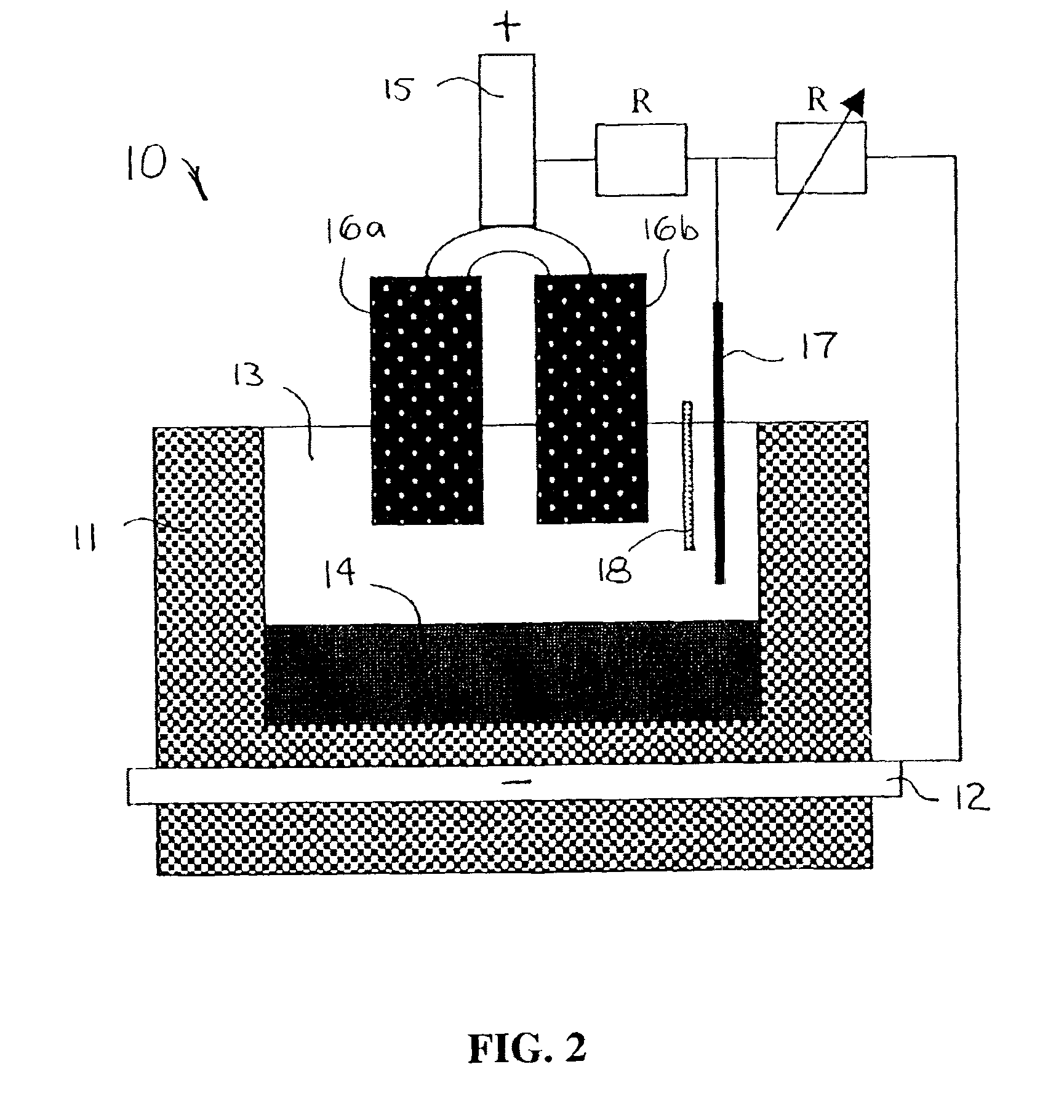Methods and apparatus for reducing sulfur impurities and improving current efficiencies of inert anode aluminum production cells
a technology of inert anode aluminum and production cells, which is applied in the field of reduction of sulfur impurities in inert anode aluminum production cells, can solve the problems of reducing the current efficiency of cells, unwanted redox reactions which consume electrical current, and sulfur, iron, nickel, vanadium, etc., and achieves the reduction of sulfur impurities and removal of sulfur impurities, high current efficiency, and the effect of increasing current efficiency
- Summary
- Abstract
- Description
- Claims
- Application Information
AI Technical Summary
Benefits of technology
Problems solved by technology
Method used
Image
Examples
Embodiment Construction
The present invention reduces sulfur impurities during aluminum smelting processes which have been found to adversely affect current efficiency of the electrolytic cells. Additional types of impurities to be reduced or eliminated include iron, copper, nickel, silicon, zinc, cobalt, vanadium, titanium and phosphorous impurities. The “current efficiency” of a cell can be determined by the amount of aluminum produced by a cell during a given time compared with the theoretical amount of aluminum that could be produced by the cell based upon Faraday's Law.
Sulfur is a particularly harmful impurity which has been found to significantly adversely effect current efficiency of inert anode cells. For example, in inert anode cells, sulfur in ionized forms such as sulfates, e.g., Na2SO4 and Na2SO3, may be present in various valence states, e.g., S−2, S0, S+2, S+4 and S+6. The S+6 species is particularly disadvantageous in inert anode cells because it can be easily reduced and subsequently reoxid...
PUM
| Property | Measurement | Unit |
|---|---|---|
| current efficiency | aaaaa | aaaaa |
| current efficiency | aaaaa | aaaaa |
| current efficiency | aaaaa | aaaaa |
Abstract
Description
Claims
Application Information
 Login to View More
Login to View More - R&D
- Intellectual Property
- Life Sciences
- Materials
- Tech Scout
- Unparalleled Data Quality
- Higher Quality Content
- 60% Fewer Hallucinations
Browse by: Latest US Patents, China's latest patents, Technical Efficacy Thesaurus, Application Domain, Technology Topic, Popular Technical Reports.
© 2025 PatSnap. All rights reserved.Legal|Privacy policy|Modern Slavery Act Transparency Statement|Sitemap|About US| Contact US: help@patsnap.com



